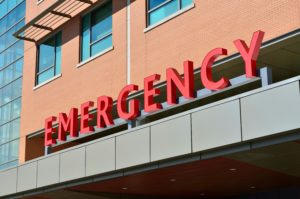This is how the AI article summary could look. Lorem ipsum dolor sit amet, consectetur adipiscing elit, sed do eiusmod tempor incididunt ut labore et dolore magna aliqua. Ut enim ad minim veniam, quis nostrud exercitation ullamco laboris nisi ut aliquip ex ea commodo consequat.
Five ideas to reduce pressure on A&E departments

We all know our A&E departments are crowded, chaotic and have corridors full of patients on trolleys. But what can we do to help? Here are five ideas.
Things you can do
1. Use alternative NHS services
MyHSN has another article on how to use alternative NHS services to avoid A&E attendance.
It is especially important to make full use of your local pharmacy.
2. Avoid injuries
MyHSN has another article on how to avoid injuries; from car-related and fire/electricity in the home, to avocados, BBQs and trampolines and lawnmowers.
Things the NHS can do
3. Make the whole hospital flow
There are 3 main reasons why hospitals are jammed. The whole hospital being blocked is the primary cause of packed A&Es – not increased attendance. Like a hotel, if you don’t clear the clients out of the rooms, reception gets full (and chaotic!).
-
- A 7 day hospital service. Few patients are discharged at weekends, leading to Monday am chaos. Hence it usually takes until Thurs to ‘get the hospital going’. Start again
- Improve social care. 25% of people in hospital are ‘medically fit for discharge’ but we cannot get out due to lack of social care (both carers in the home and nursing/residential care)
Note. The public are now more reluctant to take their elderly home and look after them. This is part of the problem. So we must all take some responsibility for causing blocked hospitals (and therefore A&Es)
- Stop mixing non-elective and elective care. This leads to countless operations being cancelled. The patient may eventually have to go to A&E to get the operation done, as they are in a worse state. This is what happens when waiting lists for surgery are not addressed.
4. Make sure there is an alternative to A&E on the hospital site
E.g. Minor Illness/Injury Unit (MIU) or Urgent Treatment Centre (UTC) – these are similar and open 8am-8-10pm, 7 days a week. Google your nearest one. You can go directly there with no appointment; or be triaged there either from the GP reception desk or after A&E discharge.
Controversial
5. Introduce payments
-
- Introduce a small charge (£60?) for non-serious A&E attendance
- Introduce £200 charge for a 999 call out.
Note. It is not known if these ideas would act as a deterrent. What would we do it people refused to pay?
